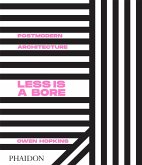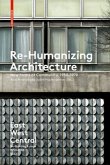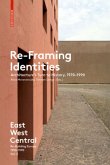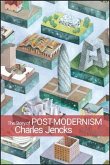After developing for thirty years as a movement in the arts, after being disputed and celebrated, Post-Modernism has become an integral part of the cultural landscape. In this witty overview, Charles Jencks, the first to write a book defining the subject, argues that the movement is one more reaction from within modernism critical of its shortcomings. The unintended consequences of modernisation, such as the terrorist debacle and global warming, are typical issues motivating Critical Modernism today. In a unique analysis, using many explanatory diagrams and graphs, he reveals the evolutionary, social and economic forces of this new stage of global civilisation. Critical Modernism emerges at two levels. As an underground movement, it is the fact that many modernisms compete, quarrel and criticise each other as they seek to become dominant. Secondly, when so many of these movements follow each other today in quick succession, they may reach a 'critical mass,' a Modernism², and become a conscious tradition.
Simon Jenkins, Journalist and Author: 'After 200 years of hyperactive and sometimes disastrous adolescence, Modernism finally may be growing up and coming to terms with its own problems. In this challenging work Jencks shows why, and what it may look like.'
Ian Buruma, Author and Henry R Luce Professor at Bard College: 'Charles Jencks does not necessarily court your agreement; he wants you to think, and then think again. He is an enemy of received opinions and sloppy clichés. That is what makes his latest book so provocative and such a delight to read.'
Felipe Fernandez Armesto, Professor of History, Tufts University: 'Charles Jencks never stops refreshing our minds. Now - on a subject on which his previous work seemed insuperable - he breaks new ground. He redefines postmodernism's place in modernity and, with his usual wit, clarity and fluency, he explains how and why the grandest of grand narratives - our integrated history of the universe - survives and thrives.'
Rem Koolhaas, Architect and Author: 'That Critical Modernism is a tautology turned into an oxymoron is perhaps its greatest strength: as Jencks argues, the critical and the modern certainly need each other.'
Hinweis: Dieser Artikel kann nur an eine deutsche Lieferadresse ausgeliefert werden.
Simon Jenkins, Journalist and Author: 'After 200 years of hyperactive and sometimes disastrous adolescence, Modernism finally may be growing up and coming to terms with its own problems. In this challenging work Jencks shows why, and what it may look like.'
Ian Buruma, Author and Henry R Luce Professor at Bard College: 'Charles Jencks does not necessarily court your agreement; he wants you to think, and then think again. He is an enemy of received opinions and sloppy clichés. That is what makes his latest book so provocative and such a delight to read.'
Felipe Fernandez Armesto, Professor of History, Tufts University: 'Charles Jencks never stops refreshing our minds. Now - on a subject on which his previous work seemed insuperable - he breaks new ground. He redefines postmodernism's place in modernity and, with his usual wit, clarity and fluency, he explains how and why the grandest of grand narratives - our integrated history of the universe - survives and thrives.'
Rem Koolhaas, Architect and Author: 'That Critical Modernism is a tautology turned into an oxymoron is perhaps its greatest strength: as Jencks argues, the critical and the modern certainly need each other.'
Hinweis: Dieser Artikel kann nur an eine deutsche Lieferadresse ausgeliefert werden.








